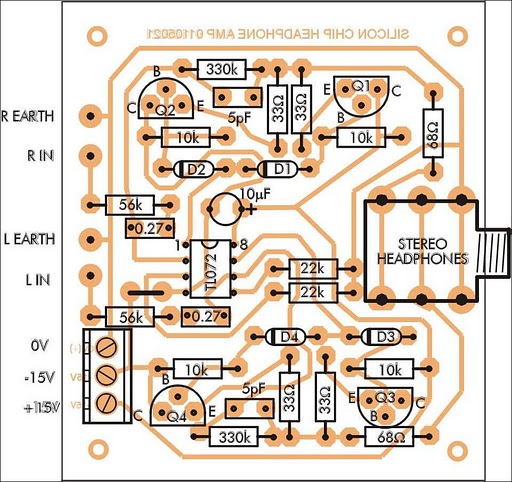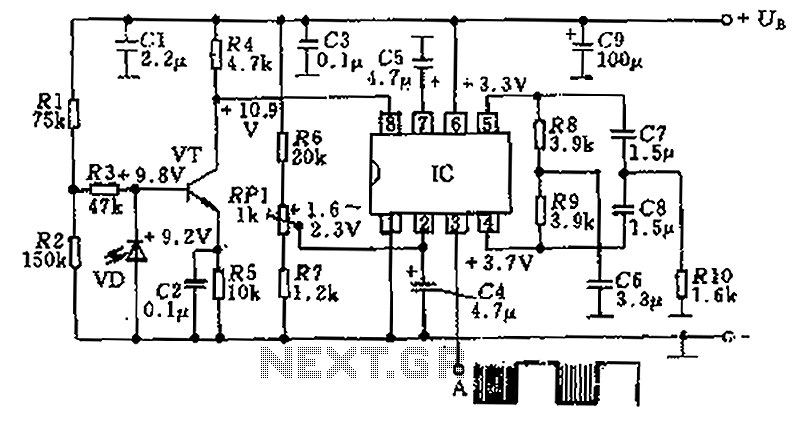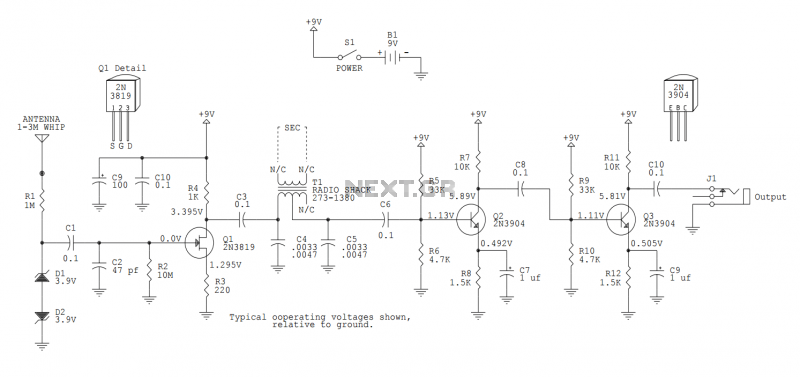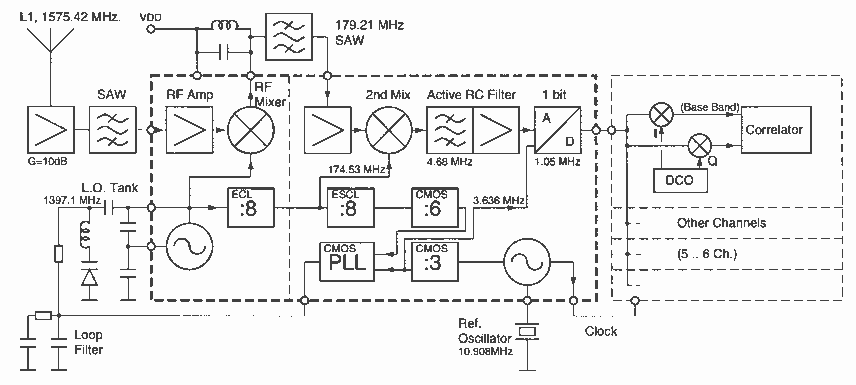
IR headphone receiver CD4046
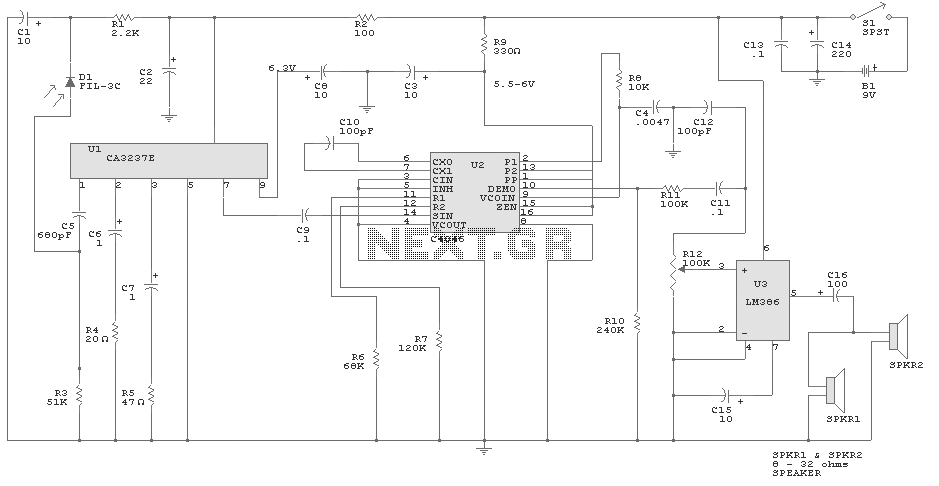
IR detector diode D1 intercepts the IR signal at around 40 kHz and feeds it from U1, a high-gain preamp, to PLL, U2, a 4046 configured to serve as an FM detector. U3 is an audio amplifier that feeds a pair of headphones or a speaker.
The circuit described operates as an infrared (IR) signal detection and audio output system. The core component, the IR detector diode (D1), is sensitive to infrared signals modulated at a frequency of approximately 40 kHz. This diode converts the incoming IR light signals into an electrical signal, which is then processed by a high-gain operational amplifier (U1). The purpose of U1 is to amplify the weak electrical signal generated by D1, ensuring that it is strong enough for further processing.
The amplified signal is then routed to a phase-locked loop (PLL) integrated circuit, specifically the 4046 (U2). This device is configured to function as a frequency demodulator, effectively extracting the audio information encoded in the 40 kHz carrier frequency. The PLL works by locking onto the frequency of the incoming signal and producing a corresponding output that represents the original audio modulation. The output from U2 is a baseband audio signal that retains the characteristics of the original audio input.
Following the demodulation process, the audio signal is sent to an audio amplifier (U3). This component is responsible for increasing the power level of the audio signal to drive headphones or a speaker. The output stage of U3 is designed to deliver sufficient current to ensure that the audio output is audible and clear when connected to the output device.
The overall circuit design allows for the effective reception and playback of audio signals transmitted via infrared light, making it suitable for applications such as wireless audio transmission systems, remote control devices, and other IR communication technologies. Proper consideration of component specifications, such as the bandwidth of the amplifier and the characteristics of the PLL, is crucial for optimal performance in the intended application. IR detector diode D1 intercepts the IR signal at around 40 kHz and feeds it from U1, a high-gain preamp, to PLL, U2, a 4046 configured to serve as an FM detector. U3 is an audio amplifier that feeds a pair of headphones or a speaker. 🔗 External reference
The circuit described operates as an infrared (IR) signal detection and audio output system. The core component, the IR detector diode (D1), is sensitive to infrared signals modulated at a frequency of approximately 40 kHz. This diode converts the incoming IR light signals into an electrical signal, which is then processed by a high-gain operational amplifier (U1). The purpose of U1 is to amplify the weak electrical signal generated by D1, ensuring that it is strong enough for further processing.
The amplified signal is then routed to a phase-locked loop (PLL) integrated circuit, specifically the 4046 (U2). This device is configured to function as a frequency demodulator, effectively extracting the audio information encoded in the 40 kHz carrier frequency. The PLL works by locking onto the frequency of the incoming signal and producing a corresponding output that represents the original audio modulation. The output from U2 is a baseband audio signal that retains the characteristics of the original audio input.
Following the demodulation process, the audio signal is sent to an audio amplifier (U3). This component is responsible for increasing the power level of the audio signal to drive headphones or a speaker. The output stage of U3 is designed to deliver sufficient current to ensure that the audio output is audible and clear when connected to the output device.
The overall circuit design allows for the effective reception and playback of audio signals transmitted via infrared light, making it suitable for applications such as wireless audio transmission systems, remote control devices, and other IR communication technologies. Proper consideration of component specifications, such as the bandwidth of the amplifier and the characteristics of the PLL, is crucial for optimal performance in the intended application. IR detector diode D1 intercepts the IR signal at around 40 kHz and feeds it from U1, a high-gain preamp, to PLL, U2, a 4046 configured to serve as an FM detector. U3 is an audio amplifier that feeds a pair of headphones or a speaker. 🔗 External reference
